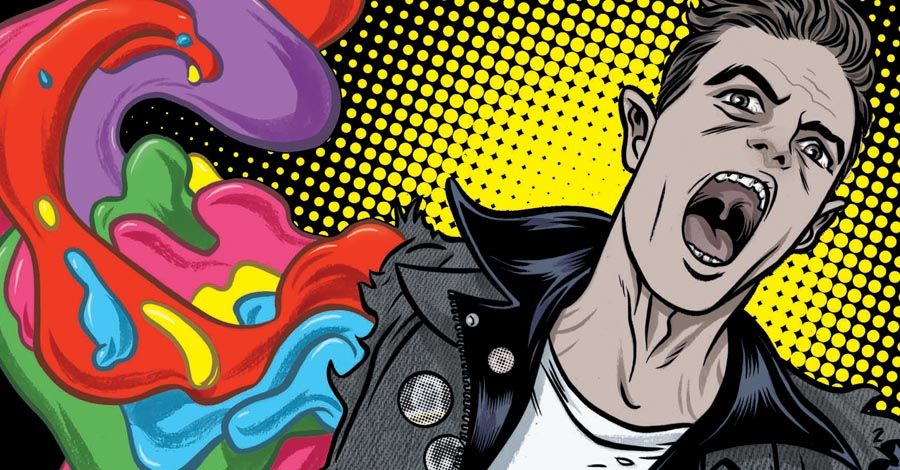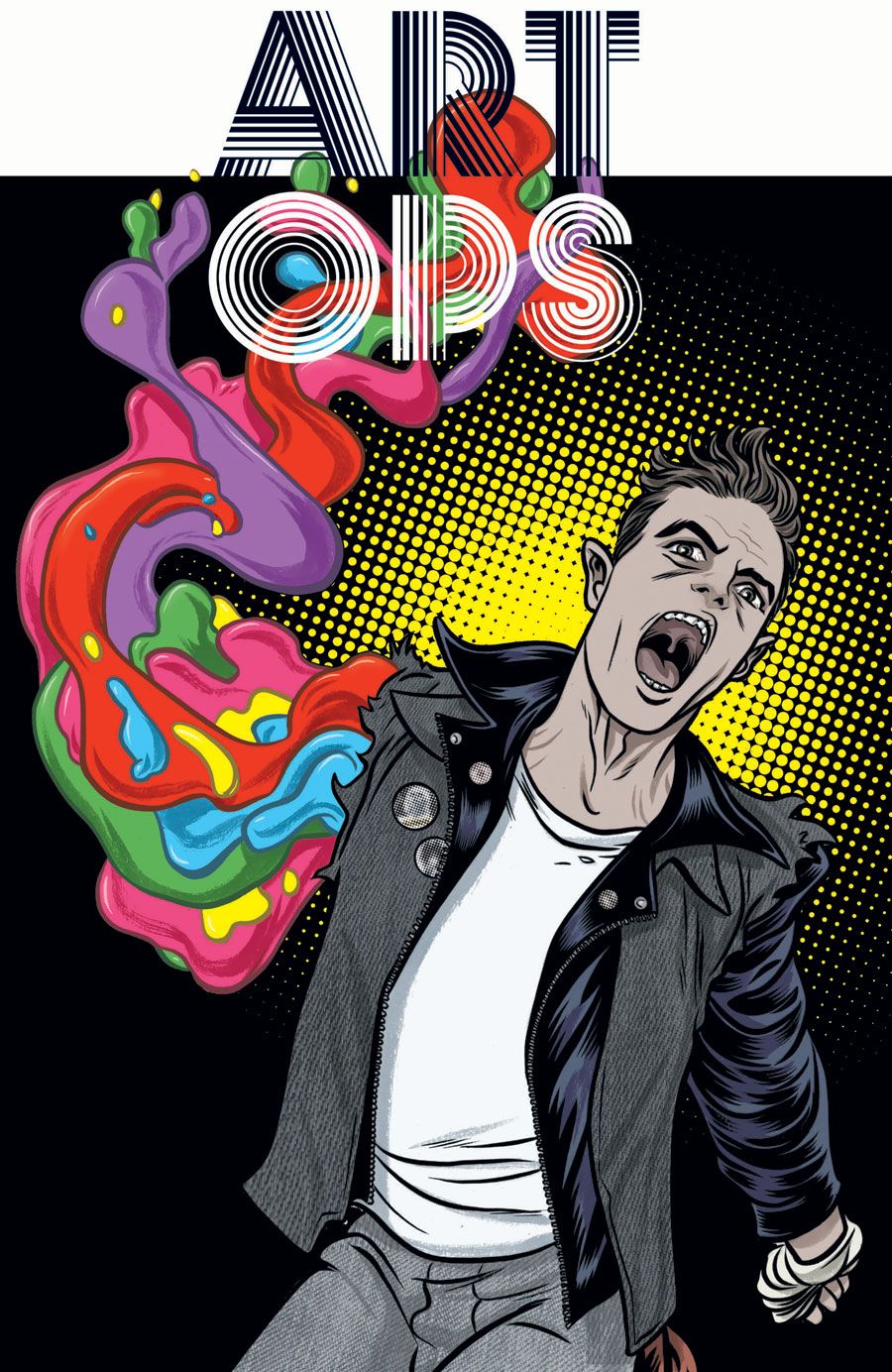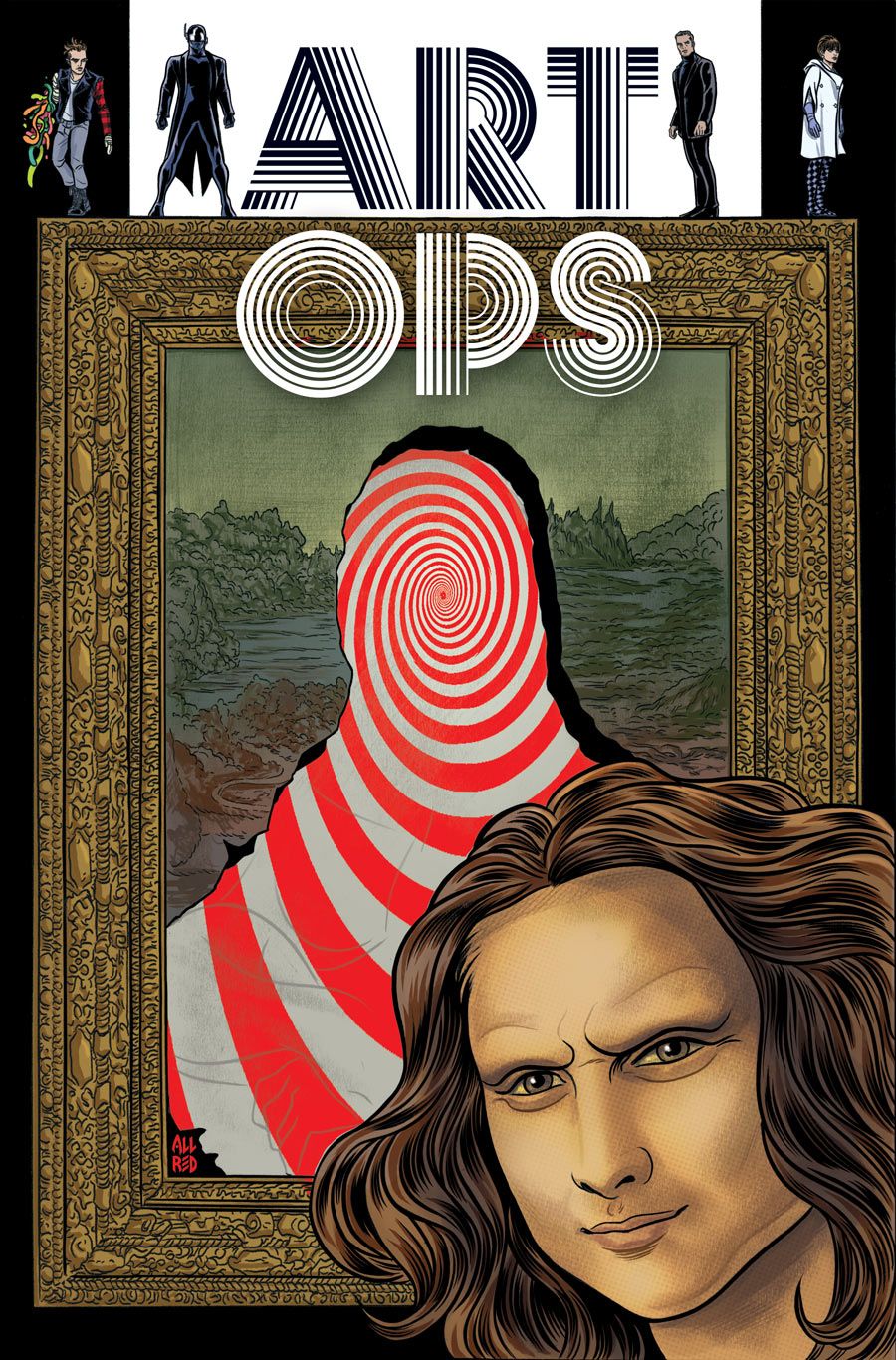Arguably the most famous painting in the world, Leonardo da Vinci's "Mona Lisa," was actually stolen from the Louvre in 1911. Pablo Picasso was considered a possible suspect, but eventually it was discovered that disgruntled Louvre employee Vincenzo Peruggia was the criminal mastermind behind the theft, and the Mona Lisa was returned to her wooden frame in 1913.
That's the neat and tidy, official account of the Mona Lisa's disappearance more than 100 years ago, but what if there were no criminal activity involved? What if the Mona Lisa, perhaps bored with her lot in life, simply decided to step out of her frame for a little rest and relaxation?
Thankfully, with Police Nationale officers clearly out of their element, Art Operatives agents are on the case.
Created by Shaun Simon and Mike Allred for Vertigo, "Art Ops" explores what happens when rogue figures from famous works of art come to life and escape their frames or step down from their pedestals.
CBR News connected with the creative team, who painted a picture about the origins of the series and unveiled some information about the title's protagonist Reggie Riot, including a secret that would make Salvador Dali shave his signature moustache: his arm is a strange, surrealist painting that he has trouble controlling. Yes, that's right -- his arm.
CBR News: We know very little about this project beyond what was announced at Comic-Con, so let's start with a simple, yet important question: Who are the Art Ops?
Shaun Simon: When the story starts, it's a secret organization that's patrolling art. Art is alive and it's able to leave its frame and climb off its pedestal. And if that happens, you have to have some form of policing. It's also something that the rest of the world doesn't know about. There is a Men in Black-type of vibe to it.
The main character is Reggie Riot. After the disappearance of his mother, the former head of Art Ops, the mantle falls to him and he's not really someone that wants to be doing this at this point and time. That's where we pick up in "Art Ops" #1.
If the art is alive, as you say, can you talk about the Mona Lisa as a character because much has been written about the mysterious woman with the famous smile?
Simon: This isn't the first time that she has left her frame. She's been out before and she's had other adventures. To her, it's not a big deal. [Laughs] I really didn't want to treat her as piece of art. I wanted to treat her like she is living now in the world. She's basically like anyone else. She's not highfalutin. And she's not better than you.
Is Mona Lisa a major character in "Art Ops" or are these done-in-one adventures with famous pieces of art?
Simon: Mona Lisa is definitely featured in this first arc where we lay the groundwork for everything. We will also see other iconic pieces in this first arc but thing about art is that it could be anything. I want to expand our horizons beyond monster-of-the-week type of stuff. We're going to see more abstract forms of art and we're going to explore different art movements. There is so much out there to play with, and we are going to see a lot of different stuff.
How did you two get together for this new series.
Simon: It started with [Vertigo Executive Editor] Shelly [Bond] asking me to pitch some stories for the "Vertigo Quarterly: CMYK" anthology series and I sent her a bunch of stuff and the title for one of them was "The Assassination of the Mona Lisa." It was just a couple of lines -- the Mona Lisa gets out from her frame and this team of art operatives have to track her down and put her back in. She read it and she liked it well enough to ask me if I wanted to develop it as an ongoing series. From there, we started talking about artists and she said, "What about Mike Allred?" And I was like, "Yeah, okay. Mike Allred. Sure." [Laughs] I never expected he would be here on the phone with us right now. But Shelly pitched the idea to him. He liked it and we started developing it into what it is now.
Mike, what did you like about the pitch?
Mike Allred: It's multi-level. Shelly Bond is the first editor that I ever, ever had. And over the years, we have developed an incredible connection and trust. She's among a handful of people that if she has an idea, I am going to drop everything and listen to it. For example, she got Chris Roberson and I together to create "iZombie." And this had that same kind of lightning bolt effect on me. The excitement just kept layering on and layering on.
I also like a challenge. With my most personal work, I try to have some kind of progressive experiment -- even if it's just very subtle for every issue. And for "Art Ops," there is the challenge of interpreting classic pieces of art like the Mona Lisa. It's a challenge to break me out of my pop art-y ways -- and I use that term because that's how people describe my work -- but if you look at my first cover for "Art Ops," I tried to really get inside da Vinci to meld my comic book style with his style and give Mona Lisa just an extra level of intensity. As opposed to her calm smile.
And it's working, because when I saw the cover for "Art Ops" #1, I double-checked with Vertigo to see if it was yours and not a variant, so it definitely projects a melded style.
Allred: Thanks. For me, one of the things that I love about comic books is the shorthand storytelling aspect of the artwork. I was very, very lucky to have Alex Toth mentor me and he was the master of only putting on the page what needed to be there to benefit the story. When you are trying to be productive and in this case, on a monthly basis, you really want to be economical so that when you do go in with some heavy detail it's for a reason and the pay-off is that much more instead of making every panel overwhelm the story with unnecessary detail.
For "Art Ops," when a piece of art calls for it, you have to blow it out a little bit. And that provides a contrast for the pure storytelling, economical style, which I'm a huge fan of and practitioner of. I find it all very exciting.
There's an excellent book that came out a few years ago called "Museum of the Missing: A History of Art Theft" by Simon Houpt that chronicles the "sport" of art theft, and I know the Mona Lisa was stolen in 1911. Did you go back and read about historic art heists for inspiration or is "Art Ops" too far outside of reality for that kind of research?
Simon: I did when I started to develop the story but you get to a certain point and you just start making it up. [Laughs] Obviously, there is a huge history of forgeries and heists, concerning the Mona Lisa as an example, but I threw all of that out the window. This book is a really fun story where anything can happen and we're really building a whole world not just a story. There is a whole history behind the Art Ops. This [art escaping from its frame] has been going on for a while.
Mike, you've talked about your relationship with Shelly Bond but Shaun, as a comic creator, is it extra special developing this project at Vertigo, a publishing imprint that has delivered hit series like "Sandman," "Fables" and "100 Bullets" over the years?
Simon: Absolutely. 100 percent. If it weren't for Vertigo, comics wouldn't be part of my life. Grant Morrison's "Doom Patrol," Neil Gaiman's "Sandman" and Peter Milligan's "Shade" and "Enigma" shaped me as a comic book reader. This is a huge honor for me to be working with Vertigo and to be working with Shelly Bond. So many creators out there today were inspired by Vertigo and you see it in their books. And like Mike was saying about Shelly Bond, she's a great editor and she has a great knack for developing ideas. I couldn't ask for better people to be working with on "Art Ops."
"Art Ops" #1 by Shaun Simon and Michael Allred arrives October 28.



